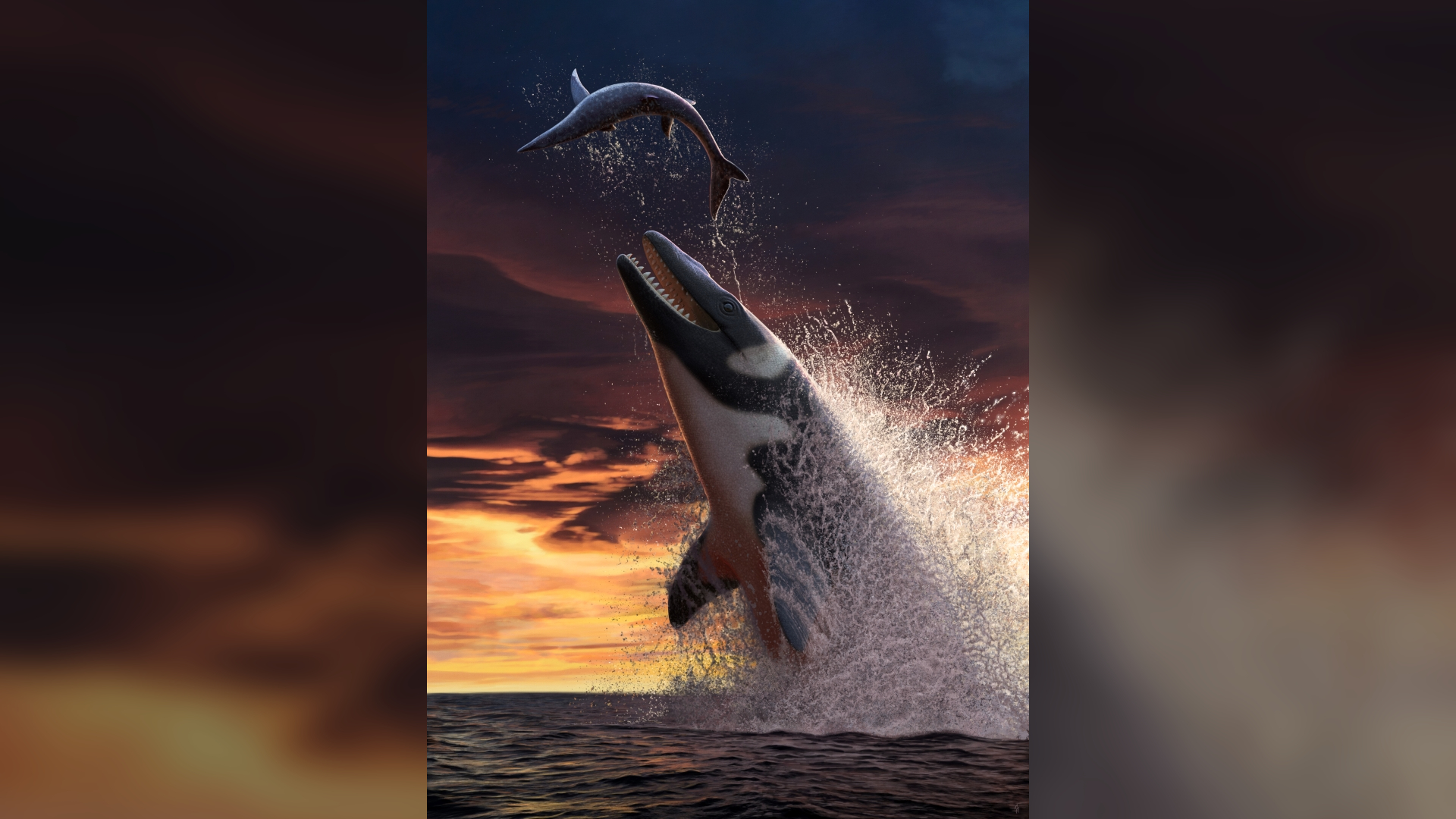'Merciless' sea monster with broken teeth prowled the seas 66 million years ago
The giant mosasaur is called Thalassotitan atrox.
A giant mosasaur with teeth like a killer whale ruled the oceans around Morocco towards the end of the Cretaceous period, a new study finds.
The extinct predator, named Thalassotitan atrox, grew to about 30 to 33 feet (9 to 10 meters) long and likely fed on any other marine reptiles it came across, including fellow mosasaurs. The name Thalassotitan comes from the Greek words "thalassa" and "titan," meaning "sea giant," and the species name atrox translates to "cruel" or "merciless," according to the study.
Researchers discovered fossilized skulls, jaws and other remains that they used to identify T. atrox near Casablanca in western Morocco, an area that was underwater during the Cretaceous period.
The researchers found that the teeth of T. atrox were often chipped, broken or worn down, suggesting the species damaged them while violently attacking and biting through the bones of prey.
Mosasaurs went extinct at the same time as the dinosaurs after a giant asteroid struck Earth 66 million years ago. The new finds add to a fossil record in Morocco that shows the ocean there was teeming with rich and diverse life before the asteroid hit.
"They tell us how life was rich and diversified just before the end of the ‘dinosaur era’, where animals had to specialise to have a place in their ecosystems," co-author Nour-Eddine Jalil, a collection manager at the Palaeontology Research Center at the Museum of Natural History in Paris, said in a statement. "Thalassotitan completes the picture by taking on the role of the megapredator at the top of the food chain."
Related: An 18-foot-long sea monster ruled the ancient ocean that once covered Kansas
Get the world’s most fascinating discoveries delivered straight to your inbox.
Mosasaurs were a diverse group of marine reptiles distantly related to modern lizards and snakes. They ruled the world's oceans for millions of years when dinosaurs dominated on land. A 2014 study published in the journal Proceedings of the Zoological Institute RAS estimated that one mosasaur specimen from a different species in Russia called Mosasaurus hoffmanni was about 56 feet (17 meters) long.
The new species, therefore, wasn't the biggest mosasaur, but it was still a top predator and filled a similar role in its ecosystem to killer whales (Orcinus orca) and great white sharks (Carcharodon carcharias) today, according to the statement.
Most mosasaurs had long jaws and slender teeth, but T. atrox evolved a shorter, wider muzzle that increased its bite force and short, conical killer whale-like teeth that could endure the increased forces when biting large prey, according to the study.
The researchers found fossilized bones of at least three other mosasaurs in the same rock beds as T. atrox that showed signs of acid damage, suggesting these mosasaurs were digested in the stomach of T. atrox and spat out again.
The study was published online Aug. 24 in the journal Cretaceous Research.
Originally published on Live Science.

Patrick Pester is the trending news writer at Live Science. His work has appeared on other science websites, such as BBC Science Focus and Scientific American. Patrick retrained as a journalist after spending his early career working in zoos and wildlife conservation. He was awarded the Master's Excellence Scholarship to study at Cardiff University where he completed a master's degree in international journalism. He also has a second master's degree in biodiversity, evolution and conservation in action from Middlesex University London. When he isn't writing news, Patrick investigates the sale of human remains.



